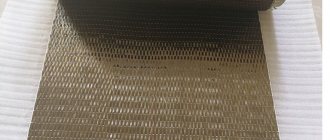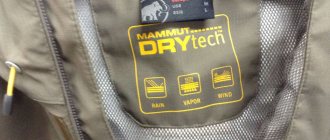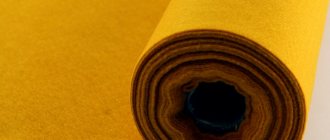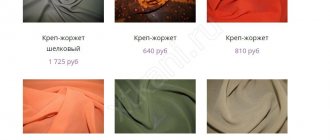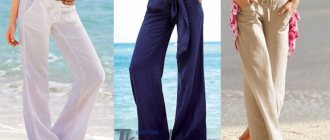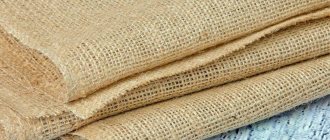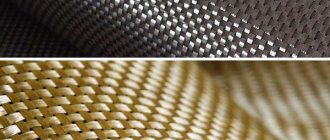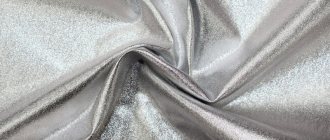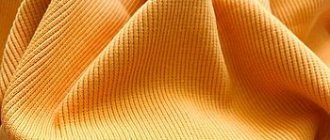What type of fabric is this
Brocade is a heavy silk fabric embroidered with metal threads of gold, silver or their alloys with other metals. The metallic thread is woven onto silk, linen or cotton weft - threads that run from one edge to the other parallel to the warp.
Brocade colors
Today the fabric is produced in many countries, but its largest suppliers on the world market are: China, Russia, India, Turkey.
Moreover, Chinese and Indian brocade are the most expensive; they are made by hand and used only to create exclusive items.
Origin story
The word “brocade” is literally translated from Persian as “matter”.
Brocade, like all silk fabrics, was invented in China. Back in the 10th century, Chinese craftsmen learned to weave this precious silk fabric. To give it shine, they wove threads of precious metals into silk. Gold brocade was very expensive, so clothes were made from it only for the imperial family.
Over time, the secrets of its production came to India, Turkey and Persia, where brocade began to be additionally decorated with precious stones and skillful embroidery.
In the Middle Ages, brocade began to be woven in Europe: Italy, France, Spain.
This luxurious material appeared in Russia in the 16th century, and royalty and clergy immediately fell in love with it.
Production and use of brocade
In the modern world, brocade is produced in various countries of the world; both machine and hand-made methods . Handmade brocade is an exclusive, expensive hit in the world of fabrics, which is produced mainly in China and India.
The most famous Chinese brocade is Nanjing , which is called “cloud”, due to the tenderness and airiness of the patterns. There are four varieties: Kuduan satin, gold thread brocade, Kujin and patterned brocade. If the first three types were learned to be made using modern weaving machines, then the latter requires exclusively manual, extremely complex and painstaking work: two craftsmen work together on a special wooden hand loom, controlling numerous levers and pedals. With all this, the weaver works with his whole body, follows the finished pattern with his eyes, and repeats the secret of the technology in his mind. As a result, a unique brocade appears, which in 2005 was recognized as one of the first objects of intangible cultural heritage in China.
In India, the most expensive brocade is “ yamdani ”: during its production, zari is added to real silk - a silver or gold thread, today, however, more often synthetic. Usually it is made to order: for wedding suits, ceremonial or festive clothes.
In European countries, synthetic brocade is more often produced, which is lighter and cheaper.
If we talk about the areas of application of this fabric, we can see that it is universal: it is used to make suits, dresses, religious clothing, curtains, and is used in furniture upholstery. Women's evening dresses look especially impressive, in which everyone becomes a queen, because from time immemorial this fabric has been a symbol of femininity and elegance . The only thing you need to remember is that brocade in its pure form is very colorful and rough , so it is very important to combine it correctly with other fabrics and materials.
Types of fabric
Depending on the composition of brocade, the following types are distinguished:
Silk
Classic brocade, dense but soft, holds its shape well, embroidered with gold or silver threads. The most expensive type of fabric, it can be embroidered or jacquard weave.
Viscose
Soft and durable fabric, does not wrinkle, holds its shape well, the embroidery is made with lurex threads. Therefore, its price is much lower than silk.
Cotton or wool
The base is made of cotton or wool threads and the embroidery is done in lurex.
Lycra or elastane
Elastic threads are woven into viscose, wool or cotton fibers, improving the performance properties of the fabric.
Advantages and disadvantages
The advantages include:
- high strength and wear resistance due to woven metallized threads;
- spectacular appearance: metallic threads, sparkles, rhinestones, embroidery stand out from many other fabrics;
- drapeability: fits perfectly into folds, creating soft overflows;
- compatibility with other materials: easily combined with almost all fabrics;
- density: brocade products do not require lining;
- pliability: does not require special cutting and sewing skills.
The disadvantages of brocade are:
- high cost: even viscose brocade is a rather expensive fabric;
- limited scope;
- Difficult to maintain: to preserve the decorative effect, it requires skills in handling it;
- if it contains natural metal threads, they quickly become dull and can fray.
Rules of care
Despite some shortcomings, brocade still remains a fairly popular material. Considering its high cost, it is natural to assume that the owner will want to keep its beautiful appearance for as long as possible. Since there are many types of brocade and they are all made from different materials, and therefore have different properties, there simply cannot be uniform rules of care. The owner of a product made from brocade fabric should first of all pay attention to the care recommendations that every manufacturer is required to give. The label should contain comprehensive information on how to care for the product. By adhering to these rules, you can significantly extend the life of your favorite clothes.
The uniform rules for caring for any type of brocade include only those based on the common element of this luxurious material - metal threads.
- Do not allow the fabric to come into contact with both acidic and alkaline environments. Any of these substrates will cause the metal to tarnish.
- Metal threads can also become dull due to washing in very hot water.
- For brocade, machine washing is completely unacceptable - metallic inclusions will fray and create puffs on the base. It is best to have your items dry cleaned and dry cleaned. But if you still want to do it at home, then you only need to wash it by hand in warm water.
- You need to dry it in natural conditions, avoiding high temperatures and direct sunlight.
- Products made from brocade do not need to be ironed, as it practically does not wrinkle. If necessary, heat treatment with a medium-temperature iron on the reverse side using a damp cloth is permissible.
What standards are used in production? What do they take into account?
For the production of brocade, the standards prescribed in GOST 28253-89 Silk and semi-silk dress and dress-costume fabrics are used. General technical conditions (with Amendment No. 1)".
The fabric must match:
- color fastness must comply with GOST 7779;
- in terms of artistic and aesthetic indicators, the fabric must correspond to standard samples approved in accordance with GOST 15.007;
- abrasion resistance - according to GOST 18976;
- crease resistance - according to GOST 19204;
- resistance to crumbling - according to GOST 3814;
- hygroscopicity - according to GOST 3816.
What is the approximate price for selling?
The cost of the fabric depends on the base used, the quantity and quality of metallized threads, the complexity of the pattern, the presence of decor and the manufacturer. The price of 1 meter of brocade starts from 400 rubles and reaches several thousand. The most expensive brocade from Nanjing (China) is available only to a narrow circle of consumers.
Thanks to its splendor and shine, brocade has not lost popularity for several centuries, decorating the classic interiors of expensive houses, theaters, restaurants and hotels. The material is practically not used in everyday life, but is ideal for sewing luxurious evening dresses.
Application
Brocade is a universal fabric that is used both for tailoring and for the production of textiles and furniture upholstery. The main limitation can only be that this is an expensive type of fabric (although there are cheaper analogues, brocade fabrics) and implies the solemnity of an event or interior.
Cloth
Typically, clothes are made not from traditional brocade, but from its analogues.
- For everyday wear, such brocade fabric should be used with caution; it is better to combine it with other types of fabrics.
- Evening dresses or wedding dresses will make their owners feminine and luxurious.
- Brocade is often used to make carnival and theatrical costumes, as well as clothes for church ceremonies.
Caring for brocade clothing
Such clothes require careful care; it is recommended to have them dry cleaned. You can wash brocade by hand by carefully studying the recommendations on the product label. You cannot wring it out; it should be dried by hanging it on a hanger in a warm room. Ironing is not necessary; only if necessary, you can iron the folds on the reverse side.
Sewing
Making brocade clothes yourself is not very difficult, you just need to follow some rules:
- When cutting, you need to take into account the direction of the threads so that the brightness of the finished product is uniform. The threads give off a reflection; at different angles its intensity changes.
- It is better to sew clothes with a lining, as brocade is very stiff and can cause discomfort.
- You can use regular scissors.
Home textiles
Brocade is used to make a variety of decorative items for classical, palace, oriental and French interiors, where an emphasis on luxury and sophistication is welcomed.
Curtains
Nothing emphasizes the luxury and richness of a room like brocade curtains. They are heavy, sparkling, drape well and can be combined with other fabrics, such as organza. They are best used in bedrooms, as they are dense and almost do not allow light to pass through.
Curtains will add solemnity, warmth and comfort to a living room in a classic style and will go perfectly with expensive interior items and furniture.
Care
Such curtains are usually dry cleaned, but if necessary, they can be washed in water at room temperature without wringing. Stains should be removed using a sponge and a towel laid on the back.
Upholstery
Traditional brocade is now practically not used for furniture upholstery, with the exception of palace interiors and luxurious homes of wealthy people. In the old days, it was widely used for upholstery. In rooms decorated in a classical style (for example, baroque), at least one piece of furniture covered with brocade will look great. This could be an armchair or a small couch, pouf, which are in the most visible place.
Brocade is also used for wall decoration; it is perfect for creating an interior in an oriental and Indian style. Brocade pillowcases, canopies, bedspreads - all this will be a wonderful addition to any of these interiors.

